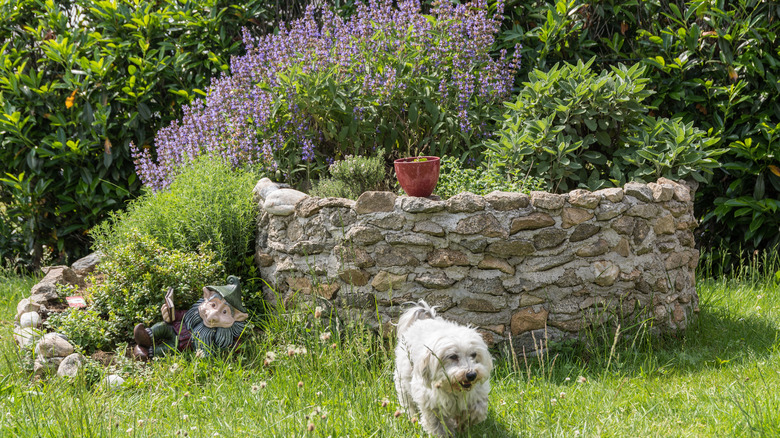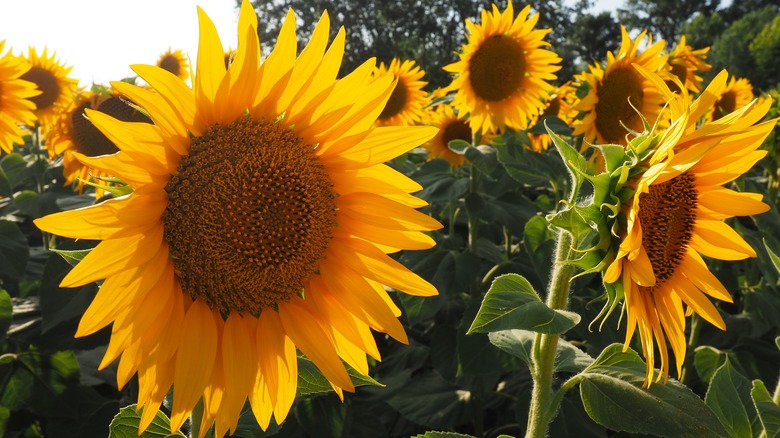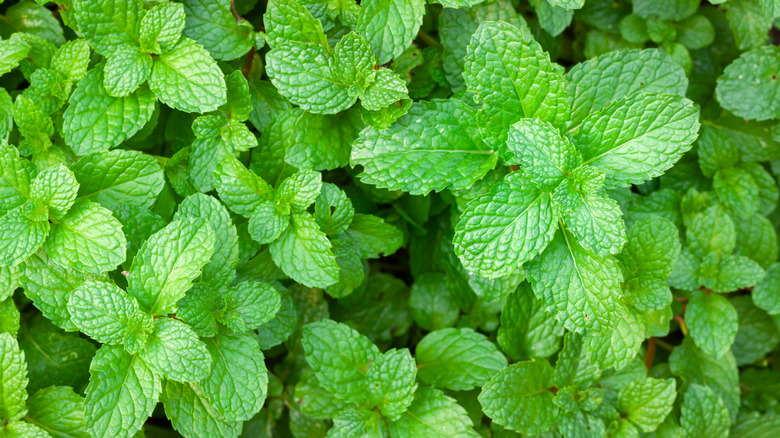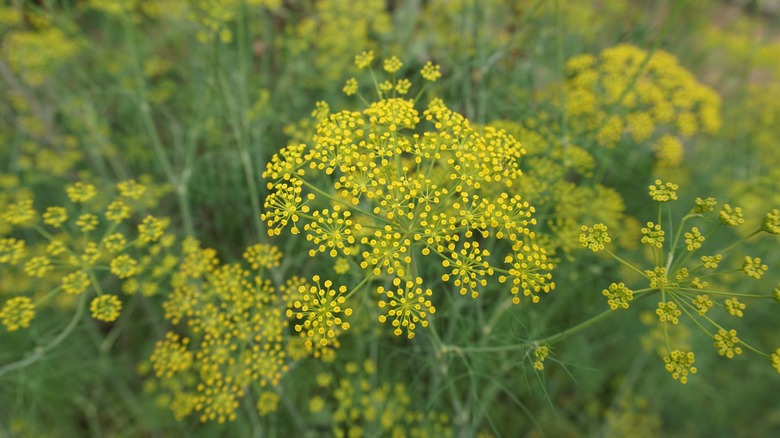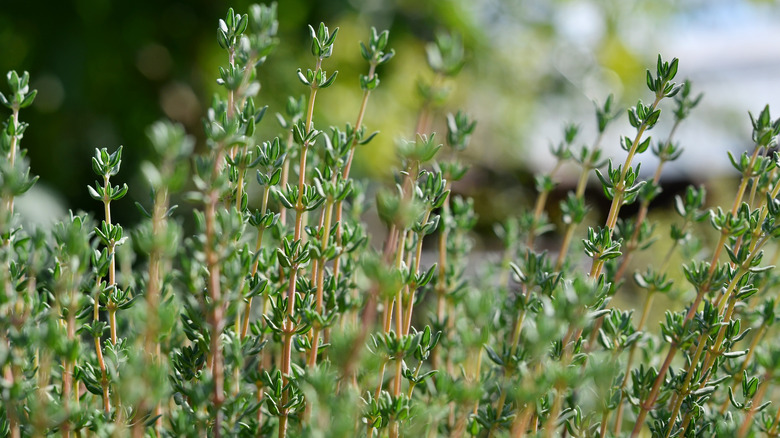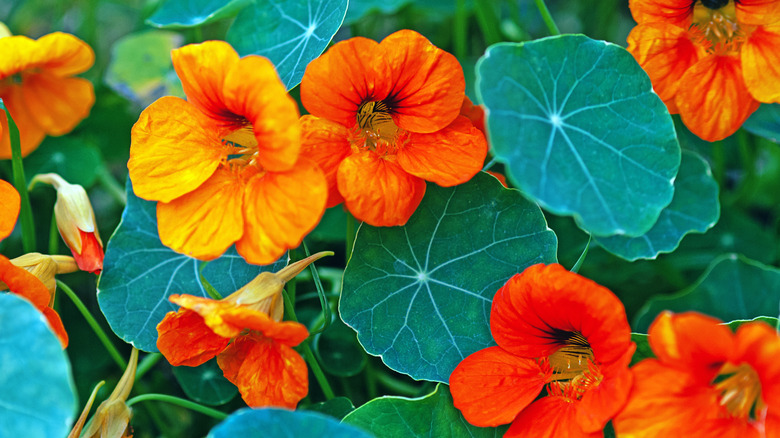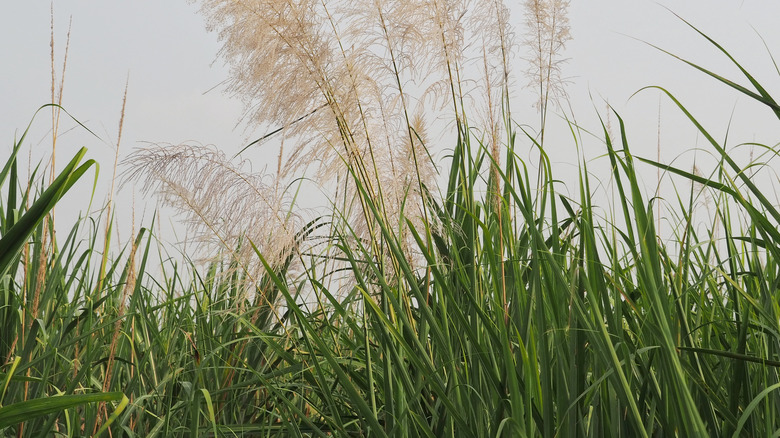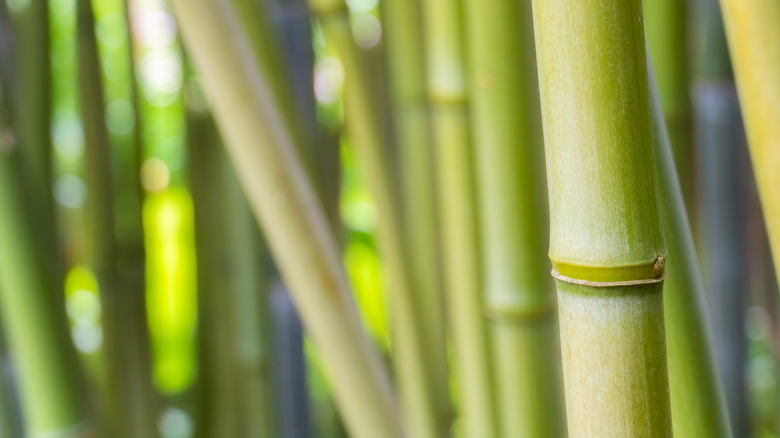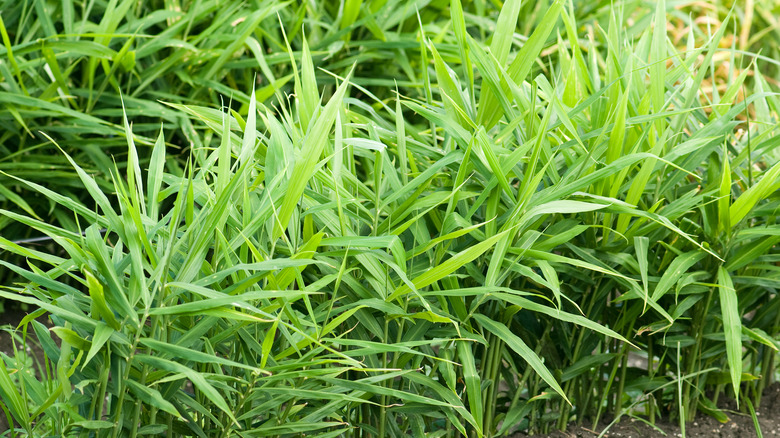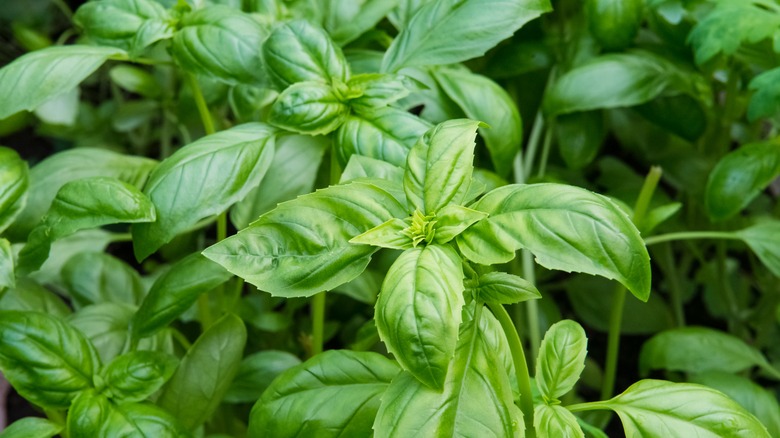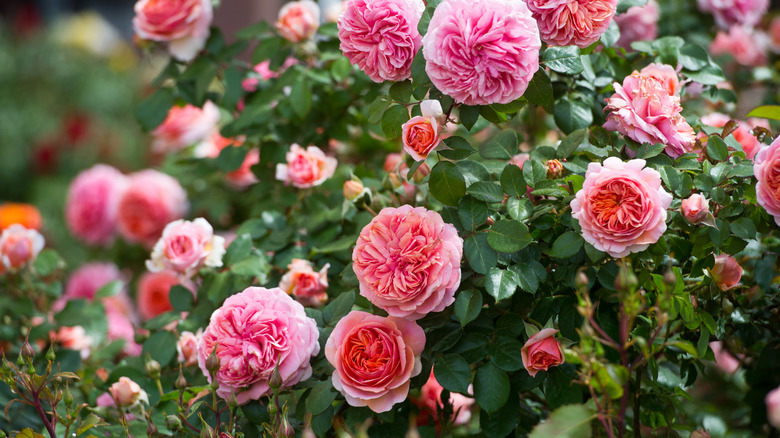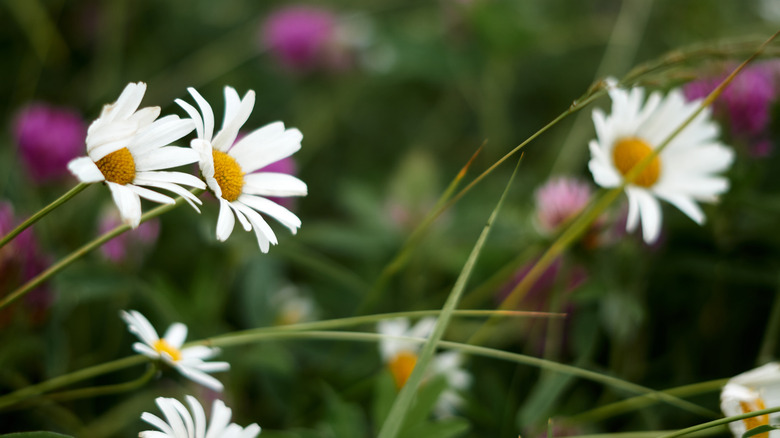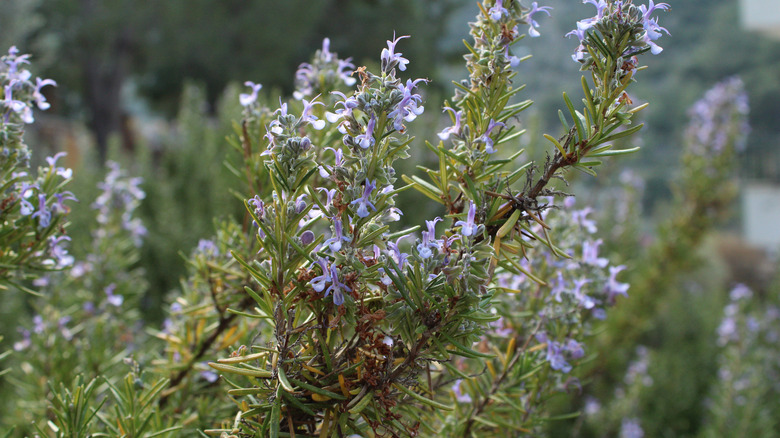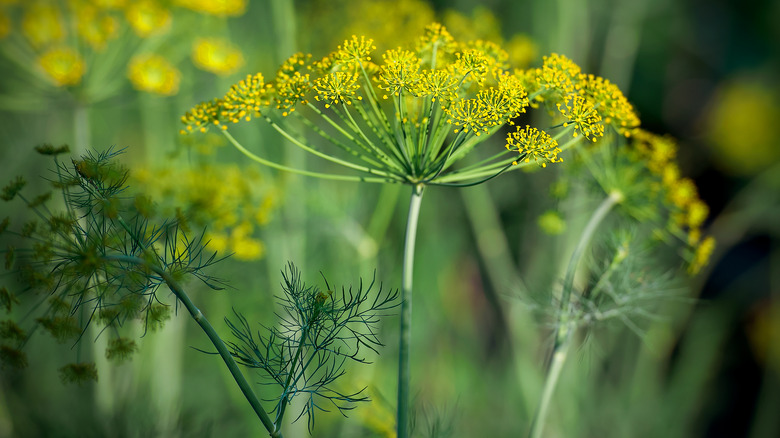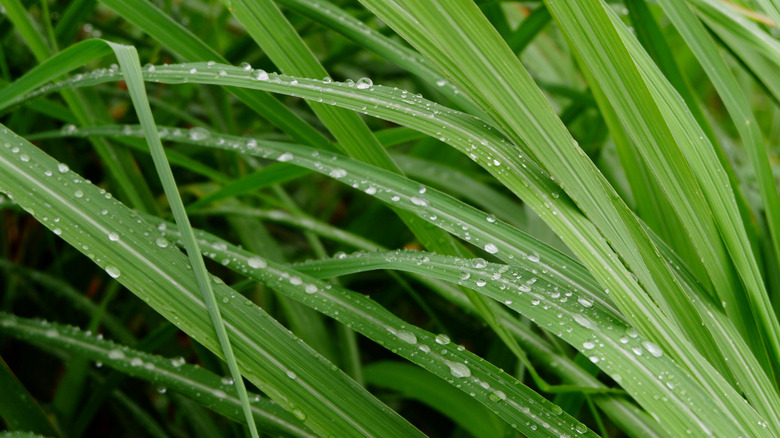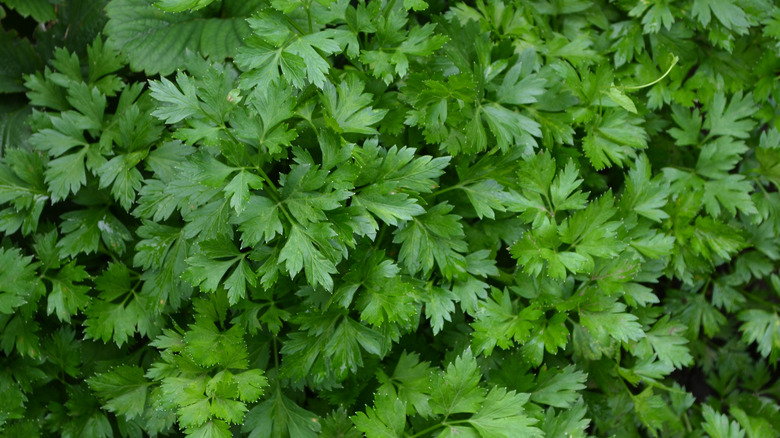15 Plants You Can Grow That Your Dog Will Love
Dogs and gardens don't always work well together. There are countless beautiful flowers, shrubs, and foliage-filled plants that are extremely toxic to your pets. These you do not want to grow. Although you can try to keep your pup out of your garden, it's not worth the risk if they somehow find their way into this protected area of your yard. If your dog eats the wrong plant, it can experience a range of symptoms that can lead to an expensive vet bill or even death. For example, one popular garden flower, azaleas (Rhododendron spp.), can cause vomiting, diarrhea, and cardiac failure in dogs and cats if consumed, as warned by the ASPCA.
To keep your furry friends safe, you can make sure that each of your garden plants is non-toxic to pets. There is a wide array of flowers, bushes, and herbs that are harmless or even good for your dog to eat occasionally. You can turn your backyard garden into a win-win scenario for you and your pup when you decide to grow herbs that both aid in their dietary health and season your meals with bold flavors. If this sounds like something that you and your dog would enjoy, get your garden started with this collection of plants that you will both love.
1. Sunflower
Sunflowers (Helianthus annuus), which are considered an annual herb, are well known for their large blooms, tall stems, and edible seeds. This plant does not only have parts that are edible for humans, but dogs can enjoy them too. According to the California Native Plant Society, the sunflower plant is attractive to all kinds of life, including butterflies, bees, birds, and moths, in addition to dogs and humans.
Bloom Season: Summer to fall
USDA Growing Zone: 2 to 11
Growing Conditions: Full sun
Soil Type: Rich and well-draining
Size: 5 to 10 feet tall and 2 feet wide
2. Peppermint
Peppermint (Mentha × piperita) is regarded for its ability to soothe a few different ailments such as headaches and stomach aches. This plant grows easily in many garden settings, and it is safe for your dog to consume. Noted by Missouri Botanical Garden, this mint species can be used in an herb garden or rain garden, or it can be planted as ground cover.
Bloom Season: Summer
USDA Growing Zone: 5 to 9
Growing Conditions: Full sun to partial shade
Soil Type: Rich and moist
Size: 1 to 2 feet tall and wide
3. Fennel
The fennel plant (Foeniculum vulgare) is cultivated because of its aromatic seeds and delicious stems, as told by the University of Wisconsin-Madison. A multipurpose plant, fennel can be grown in various garden types depending on your use for it. Thankfully, the versatile herb is also pet friendly, so you can feel free to let your curious pup check out your plants.
Bloom Season: Summer
USDA Growing Zone: 4 to 9
Growing Conditions: Full sun
Soil Type: Well-draining
Size: Up to 6 feet tall
4. Thyme
Thyme (Thymus vulgaris) is an easy-to-grow Mediterranean plant that is recognized for its fragrant leaves and flowers, says North Carolina State Extension. The plant can be grown in cooler climates as a perennial, but care should be taken to protect it from frost damage. During the spring and summer, thyme plants will explode with pink, purple, or white flowers that are also technically edible.
Bloom Season: Spring and summer
USDA Growing Zone: 5 to 9
Growing Conditions: Full sun
Soil Type: Evenly moist and well-draining
Size: 6 to 12 inches tall and wide
5. Nasturtium
Nasturtium (Tropaeolum majus) is an annual flower that is described as fragrant, showy, and spicy. Missouri Botanical Garden says that this warm-weather plant is commonly found in herb gardens because of its edible blooms. While they don't have a wide range of use in the kitchen, the aromatic flowers can be a good addition to savory salads.
Bloom Season: Summer to fall
USDA Growing Zone: 2 to 11
Growing Conditions: Full sun
Soil Type: Well-draining
Size: 1 to 10 feet tall and 1 to 3 feet wide
6. Sugarcane
Sugarcane (Saccharum officinarum) is a unique plant that isn't always grown in the garden. This perennial, which is described as an ornamental grass, is cultivated for its ability to produce delicious ingredients such as cane syrup, molasses, cane sugar, and rum, as said by Purdue University. In a home garden, it's typically used as an accent plant that is safe for pets and children.
Bloom Season: Summer to fall
USDA Growing Zone: 9 to 10
Growing Conditions: Full sun
Soil Type: Moist, well-draining, and sandy
Size: 5 to 8 feet tall
7. Bamboo
Bamboo (Bambusoideae spp.) should only be grown in climates that do not experience frost, warns UIC Heritage Garden. It needs warm weather to produce tall stalks that look great in the back of a border garden or against a fence. This type of grass is easiest to grow indoors, however, growing it outside can be easy once you know how to care for it.
Bloom Season: Flowers sporadically
USDA Growing Zone: 5 to 6
Growing Conditions: Full sun to partial shade
Soil Type: Well-draining
Size: More than 100 feet tall
8. Ginger
Ginger (Zingiber officinale) has a reputation for curing stomach aches in humans. In dogs, the plant is thought to do the same. One thing is for sure — growing this plant, which boasts various uses in herbal remedies, won't hurt, as confirmed by North Carolina State Extension. The ginger plant is known to look great in edible gardens as its green foliage complements other herbs and flowers.
Bloom Season: Fall
USDA Growing Zone: 9 to 12
Growing Conditions: Partial shade
Soil Type: Moist or wet
Size: 2 to 4 feet tall and 2 to 3 feet wide
9. Basil
The basil plant (Ocimum basilium) is a favorite in herb gardens for its versatile use in the kitchen, fragrant leaves, and simple care requirements. Basil only needs direct sunlight, well-draining soil, and regular watering in order to survive. Missouri Botanical Garden states that basil is very sensitive to frost, however, so you should expect it to die in the winter.
Bloom Season: Summer to fall
USDA Growing Zone: 2 to 11
Growing Conditions: Full sun
Soil Type: Rich and well-draining
Size: Up to 2 feet tall and wide
10. Rose
Roses (Rosa spp.) are loved around the world for their incredible sweet-smelling blossoms and large growth habit. What's better, rose bushes are mostly edible and not a large threat to pets, as per Washington State University. Still, you should keep in mind that rose bushes do have sharp thorns on their branches, which can break skin when rubbed against. Always watch your children and pets while they are near this plant.
Bloom Season: Spring to fall
USDA Growing Zone: 7 to 11
Growing Conditions: Full sun
Soil Type: Well-draining
Size: 4 feet tall and wide
11. Chamomile
The edible flowers of the chamomile plant (Matricaria chamomilla) have been used to make soothing teas for a very long time. These flowers are quite pretty with many white petals and a yellow center similar to daisies. They bloom for many weeks throughout the summer and fall until they die from frost in colder regions, as noted by North Carolina State Extension.
Bloom Season: Summer and fall
USDA Growing Zone: 2 to 8
Growing Conditions: Full sun to partial shade
Soil Type: Well-draining
Size: 13 to 30 inches tall and 8 to 12 inches wide
12. Rosemary
Rosemary shrubs (Salvia rosmarinus) are typically grown for their scented leaves, which can be used in culinary dishes or organic hair products. According to RHS, this plant flowers in the spring and summer and can be planted as an annual, a biennial, or a perennial depending on the region you live in.
Bloom Season: Spring and summer
USDA Growing Zone: 8 to 10
Growing Conditions: Full sun
Soil Type: Poor and well-draining
Size: Up to 8 feet tall and wide
13. Dill
The dill plant (Anethum graveolens) is another dog-safe herb that will attract them with its fragrant aroma. The University of Wisconsin-Madison mentions that dill is a prolific self-seeder that will spread rapidly when it goes unchecked. However, your dog will not mind this weedy plant as its flavor stays fresh in your home garden.
Bloom Season: Summer
USDA Growing Zone: 2 to 11
Growing Conditions: Full sun
Soil Type: Rich and well-draining
Size: 18 inches to 4 feet tall
14. Lemongrass
Lemongrass (Cymbopogon citratus) is one of many types of grasses that your pup will enjoy. This species is tastier and more aromatic than other grasses, so your pet may gravitate toward it more than others. The lemongrass plant can be used by humans too as its lemony flavor tastes great in tea. Proven Winners mentions that the plant is also often used in Thai cooking.
Bloom Season: Spring, summer, and fall
USDA Growing Zone: 9 to 11
Growing Conditions: Full sun to partial shade
Soil Type: Well-draining
Size: 2 to 4 feet tall and 8 to 12 inches wide
15. Parsley
Parsley (Petroselinum crispum), which is related to carrots, can be consumed by people and pets alike. This biennial herbaceous plant is a good source of iron, vitamin A, and vitamin C, as told by the University of Wisconsin-Madison. Eating it yourself and feeding it to your dog can help you make sure that you both are getting your essential dose of vitamins and nutrients.
Bloom Season: Summer
USDA Growing Zone: 3 to 9
Growing Conditions: Full sun
Soil Type: Rich and well-draining
Size: 12 to 18 inches tall
